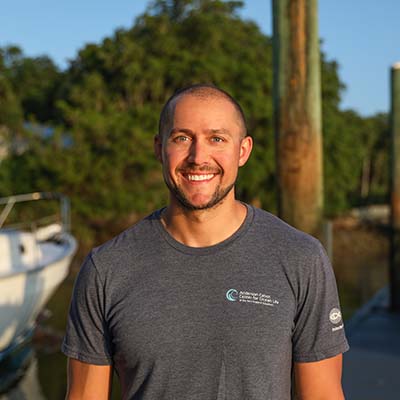Post-release mortality, recovery, and stress physiology of blacknose sharks, Carcharhinus acronotus, in the Southeast U.S. recreational shark fishery
By R.J. Knotek, B.S. Frazier, T.S. Daly-Engel, C.F. White, S.N. Barry, E.J. Cave, N.M. Whitney
Originally published in Fisheries Research in October 2022

Abstract
The post-release mortality (PRM) rate of sharks can be an important factor in estimating overall mortality in stock assessments. However, the accuracy of PRM rates is dependent on our ability to evaluate mortality under realistic fishing practices and conditions. In the Southeast U.S. recreational rod-and-reel fishery, we worked directly with recreational fishing captains to investigate the PRM of blacknose sharks, Carcharhinus acronotus. These sharks are primarily discarded alive in this fishery, but as PRM for this species has yet to be investigated, it is challenging to address the impact of recreational fishing on blacknose shark populations and assess the effectiveness of management measures. We examined PRM by first capturing blacknose sharks (n = 63) with South Carolina and Florida charter captains. Blood samples were taken immediately after capture to evaluate blood-based indicators of capture stress, and sharks were fit with acceleration data logger tags (measuring tri-axial acceleration, depth, and water temperature) to monitor fine-scale behavior and mortality for up to 136 h post-release. Sharks captured in warmer water temperatures displayed increased lactate and decreased pH, the latter of which was more pronounced in females. Fine-scale behavior profiles revealed survivorship for most animals and impaired swimming and mortality in others. All mortality events were attributed to predation events, as evidenced by marked changes in movement that deviated from recorded blacknose shark swimming behavior. Our estimated PRM rates ranged from 3.7% to 41.5%, depending on the release condition of the animal (i.e., increasing level of swimming impairment). Handling duration negatively influenced release condition, indicating extended handling durations increased the probability of a shark showing impaired swimming. Fishery-scale PRM was estimated as 8.5% when considering the distribution of release conditions observed throughout the study. Tag data showed that surviving sharks took an average of 11.7 h to recover and resume normal swimming behavior, with recovery taking longer in warmer water. The overall post-release mortality rate in this fishery is relatively low but may still impact the stock if the total catch is high enough throughout the fishery. Findings from our study will enhance estimates of fishing mortality in future stock assessments and help formulate best practices to reduce the overall fishing mortality of blacknose sharks.
Full Text



